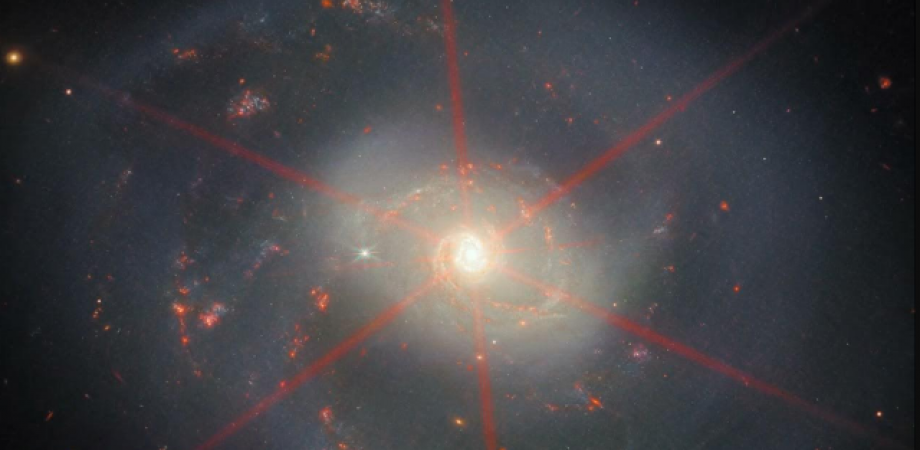
USA: The bright, spiral galaxy NGC 7469 is visible in a recent image taken by the James Webb Space Telescope (JWST), which has the aptly named caption "cosmic wreath." New details that have never been seen before are revealed in the image. 220 million light-years away from Earth, in the constellation Pegasus, is the galaxy. In the lower left corner of the picture, you can also make out another galaxy called IC 5283.
The intervening cosmic dust has always presented a challenge to researchers trying to study the spiral galaxy NGC 7469, which has been around for a while.
With the help of Webb's infrared capabilities, researchers can now see through the dust to study the galaxy in greater detail and spot more features, such as the dense ring of star formation that surrounds the galaxy's bright centre.
Also Read: Codes for Garena Free Fire MAX on December 22
An active galactic nucleus is the name for the NGC 7469's bright central region (AGN). A supermassive black hole at the galaxy's core is the source of the light, and it eats anything that comes within its vicinity.
Astronomical observations are facilitated by the spiral galaxy's almost face-on position when seen from Earth. In terms of light years, it has a diameter of about 90,000.
Webb's image has shown "very young star-forming clusters never seen before, as well as pockets of very warm, turbulent molecular gas, and direct evidence for the destruction of small dust grains within a few hundred light-years of the nucleus," according to the European Space Agency (ESA). "The AGN is impacting the surrounding interstellar medium," according to the most recent observations.
Also Read: Meenakshi Wadhwa: Scientist of Indian descent leading NASA's important Mars mission
In addition, Webb's image shows that the galaxy is emitting ionised atomic gas at a speed of about 6.4 million kilometres per hour. Ground-based observations have previously identified a portion of the galactic outflow, but it has never been observed in such detail.
AGN in NGC 7469 is also significant because it is surrounded by a starburst ring and is only 1,500 light-years away, providing astronomers with a rare opportunity to study the connection between AGNs and starburst activity.
The starburst ring, the central AGN, and the interstellar dust and gas are all better understood thanks to Webb.
Also Read: NASA officially ended the Mars InSight Lander mission
Although the most recent Webb image is beautiful, what is that orange, six-pointed star at the galaxy's centre?
The bright and unresolved portions of the AGN are what are responsible for the imaging artefact known as a diffraction spike.
These spikes are caused by light bending at telescopes' edges. The hexagonal mirror configuration of the telescope results in six-pointed diffraction spikes in Webb's images.